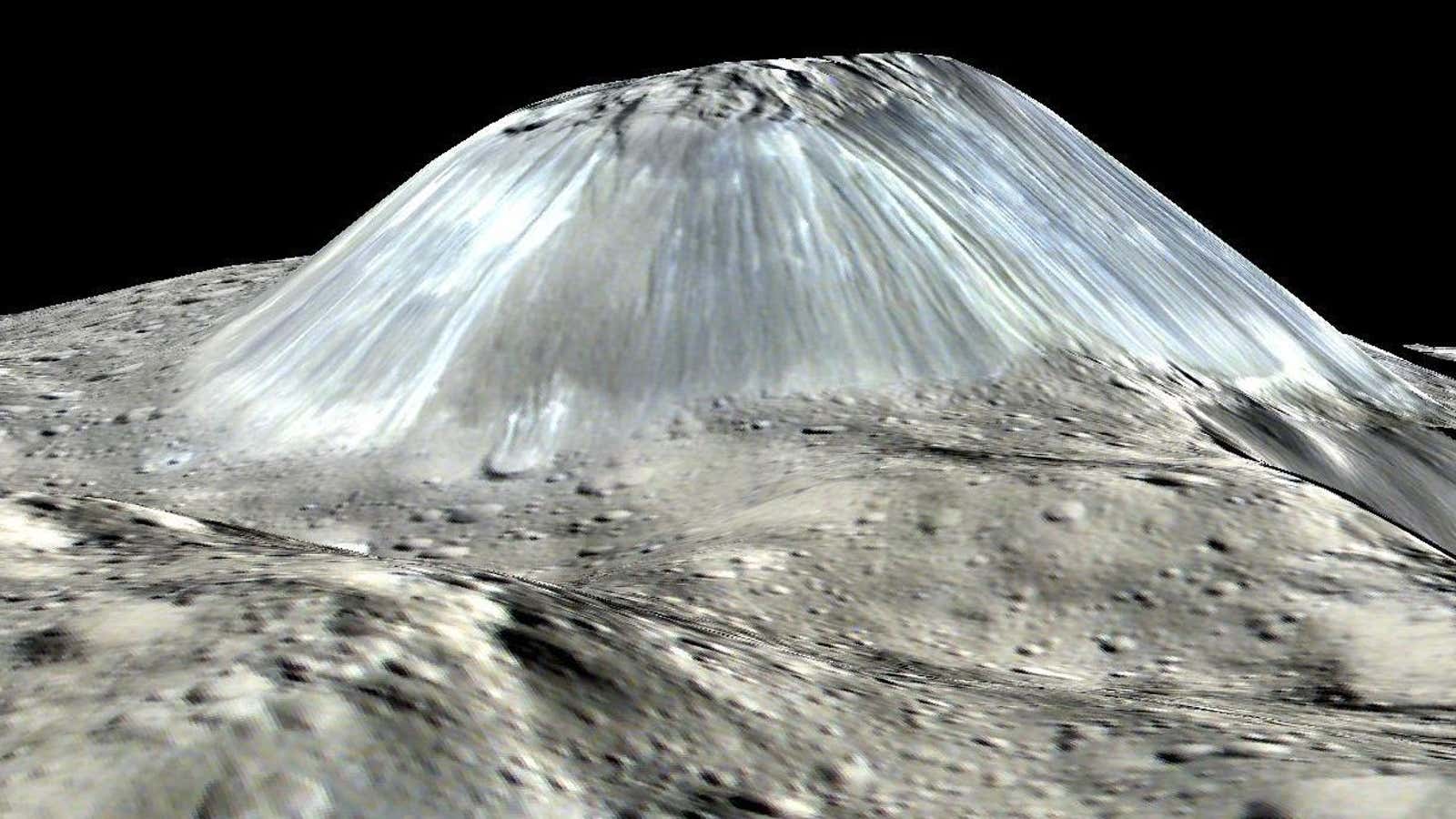NASA launched the Dawn space probe 11 years ago with the mission of investigating small celestial bodies in the asteroid belt for clues about how our solar system formed. For the last three years, Dawn has been orbiting Ceres, the largest object in the asteroid belt, and a new analysis of images from the probe has revealed something spectacular: dozens of ancient ice volcanoes on the dwarf planet.
Ice volcanoes, called cryovolcanoes by scientists, are pretty much what they sound like: volcanoes that spew water, methane, or ammonia, which freeze in cold temperatures after the eruption. Scientists aren’t sure what causes them, but they’ve been found on Pluto, Saturn’s moon Titan, and Jupiter’s moon Europa. And we’ve known about at least one cryovolcano on Ceres for awhile; some of Dawn‘s first images of Ceres revealed Ahuna Mons, a 13,000-foot tall peak towering over the rest of the dwarf planet.
Ahuna Mons’s combination of size and isolation were initially puzzling to scientists—why is there nothing else on Ceres like it? A new analysis published this week in Nature Astronomy (pdf) suggests an answer: there likely used to be many more cryovolcanoes, but they’ve gone dormant and eroded over the last billion years. Ahuna Mons, too, is thought to be dormant, but because it’s comparatively young, it remains fairly tall; the researchers estimate it’s at most 240 million years old. For comparison, they estimate that one of the other domes they found is about 1.9 billion years old.
In their analysis, a team of planetary scientists pored over Dawn‘s photos of Ceres for large domes that could be the remnants of eroded cryovolcanoes. That search came up with 32 domes, all with horizontal diameters of over 6 miles (10 km). After taking a closer look at the 22 most promising matches (including Ahuna Mons), the researchers concluded that these domes were likely ice volcanoes that slumped over in a process they call “viscous relaxation.”
While rock does not slump over time, ice can. (For an imperfect comparison, think of how a viscous material like honey or molasses can initially form a peak but then spreads out.) Ice volcanoes are typically identified by their prominent peaks, so this finding suggests that there may be more we didn’t notice before. Dormant ice volcanoes may be even more common in our solar system than we thought.
Beyond being a totally wild concept, ice volcanoes are exciting to scientists because they could support extraterrestrial life. Perhaps there’s liquid water inside a cryovolcano, or the processes inside celestial bodies that lead to the eruption of these cryovolcanoes generate conditions that could support organisms; after all, some scientists believe that life on Earth could have begun in hydrothermal vents (paywall).
